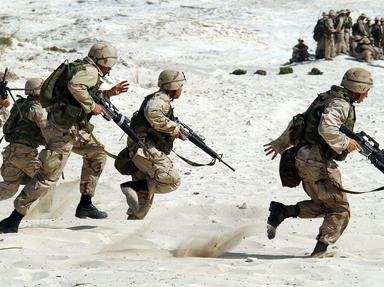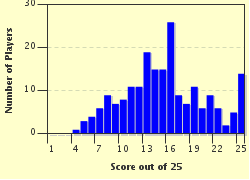Quiz Answer Key and Fun Facts
1. What bird was associated with the members of Congress advocating for war against Britain back in the early 1800s?
2. Who was the British commander at the Siege of Detroit?
3. What ship did the USS Constitution engage in the battle that gave the ship its nickname as "Old Ironsides"?
4. The United States found itself some native allies among the Creeks, yet what was the faction opposed to allying with the U.S. called?
5. Who led the American fleet at the Battle of Lake Erie?
6. In which battle was Tecumseh killed?
7. Who led the American forces at the Battle of Horseshoe Bend?
8. The Battle of Bladensburg led to the burning of which city?
9. The Battle of Plattsburgh took place in which state?
10. Who wrote the Star-Spangled Banner?
11. Who organized the Hartford Convention, opposing the War of 1812?
12. What was strange about the Battle of New Orleans?
13. Where was the peace treaty ending the War of 1812 signed?
14. Who was the president during the so-called Era of Good Feelings?
15. When was the first protectionist tariff passed by Congress?
16. What was the "American System"?
17. During which of these years did an economic crisis occur in the United States?
18. The Second Bank of the United States was part of a Supreme Court case involving which state?
19. Which of these state's request for statehood resulted in renewing the debate of slavery in America?
20. Which of these treaties settled territorial disputes with Britain during the Monroe administration?
21. The Adams-Onís Treaty resulted in the purchase of land that would become which future state?
22. The Monroe Doctrine established which region of the world as part of the United States sphere of influence?
23. DeWitt Clinton is famously associated with which piece of infrastructure?
24. What is Robert Fulton commonly associated with?
25. Who invented the cotton gin?
Source: Author
Avalice
This quiz was reviewed by FunTrivia editor
bloomsby before going online.
Any errors found in FunTrivia content are routinely corrected through our feedback system.

